Just this past December 2012, an article by Matthias Schulz titled, “Buried Christian Empire Casts New Light on Early Islam” 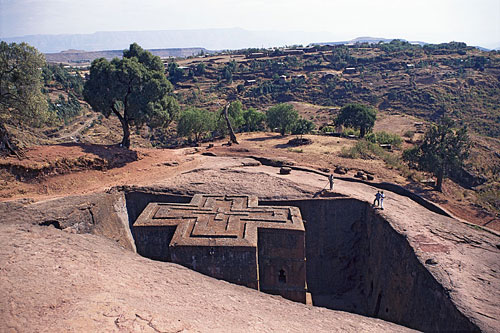 was released in Spiegel International that had reported on the revelations of a once ancient buried Christian empire in Yemen that has now come to the light again. I have found that this very location may be very well be the main uniting and then dividing point in religious history for the three main Abrahamic religions we know of today as Judaism, Christianity, and Islam.
was released in Spiegel International that had reported on the revelations of a once ancient buried Christian empire in Yemen that has now come to the light again. I have found that this very location may be very well be the main uniting and then dividing point in religious history for the three main Abrahamic religions we know of today as Judaism, Christianity, and Islam.
My research into the legends of this ancient site, may prove that this location could be the place where the various Abrahamic religions in the Fourth Century had all united under the banner of one religion. This is the time when it is said that a famous Judaic Ethiopian King had converted to Christianity along with many other prominent Ethiopians, making this once divided empire now united with Rome. However, this unification of religions and cultures would only last for a couple of centuries.
Later in the 5th Century, because of differences in doctrines and subsequent battles for control of the church between the Roman Arian Christians and the Ethiopian/Greek Nicene Christian faction would cause this alliance to become divided again. If these revelations prove to be true based on the evidence provided below, then that would make this ancient site a very important piece of the religious puzzle, in helping us understand the origins and development of these religions and also what may have caused them to become brothers who then split to war with one another over religious differences and political power.
The Sacred City of the Ethiopians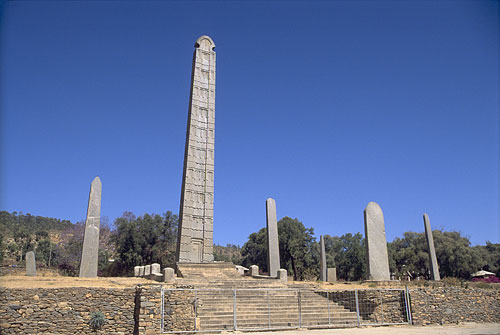
This once buried Christian Empire was once known as, ‘The Sacred City of the Ethiopians.” The current name of this location is now called Sena, Yemen. Sena (Sometimes spelled Senna, Sanaw or Sanāw) is an abandoned ancient town in Yemen located in the eastern Hadramaut valley and is some 817 kilometers (507 miles) south of Mecca. Sena was once a thriving Jewish city in the 10 Century BC that was once dominated by Israelites who had fled Jerusalem.
This makes perfect sense because this site is exactly where the legendary Maqeda (Makeda), or the Egyptian Pharaoh Queen Hatshepsut of the 18th Dynasty who in legend is also called, “the queen of Sheba and King Solomon‘s son, Menelik I (Melekh, Melech or Moloch) is said to have fled with the Ark of the Covenant. This area is typically identified as Saba, a nation once spanning the Red Sea on the coasts of what are now Eritrea, Somalia, Ethiopia and Yemen(in Arabia Felix), and it is said that the Queen of Sheba was born in Kingdom of Aksum or Axum (AHK•soom) and where she had a son by King Solomon who was then called Menelik.
After his mother, Egyptian Pharaoh Queen Hatshepsut (Makeda), AKA the Queen of Sheeba had died, Menelik then became King of Abyssinia, which we know of today as modern-day Ethiopia. In English, and generally outside Ethiopia, the country was also once historically known as Abyssinia, derived from Habesh, an early Arabic form of the Ethiosemitic name “Ḥabaśāt” (unvocalized “ḤBŚT”).
According to the Hebrew Bible, Solomon died of natural causes at around 80 years of age. Upon Solomon’s death, his son, Rehoboam, succeeded him as king. However, ten of the Tribes of Israel refused to accept him as king, causing the United Monarchy to split and form the northern Kingdom of Israel ruled by Jeroboam, while Rehoboam continued to reign in the southern Kingdom of Judah.
Menelik I is the traditional progenitor of the royal family of Aksum, who had founded the Kingdom of Solomon and was also the first Solomonic Emperor of Ethiopia. The Sacred City of the Ethiopians is where Menelik had fled Egypt and also brought the ark of the covenant. This is when he founded the Solomonic dynasty of Ethiopia, that ruled Ethiopia with few interruptions for close to three thousand years (and 225 generations later ended with the fall of Emperor Haile Selassie in 1974). Menelik is alleged to have ruled around 950 BC, according to traditional sources.
The Portuguese ambassador in 1520, Father Francisco Alvarez describes this location,“Near the church is a very grand and 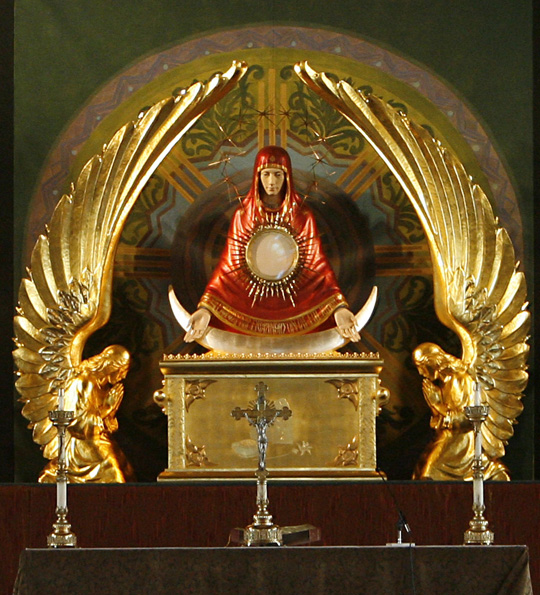 beautiful tower, remarkable not only for its well-proportioned height as for its thickness and excellent masonry, but it has already begun to fall into ruins, though built of very strong stone, covered and enriched with such excellent work that it looks as if it were nothing less than a royal palace such as I have never seen another like.” Alvarez had also said that this was the place to which Menelik, King Solomon’s son, brought the ark, and that it was subsequently the residence of Queen Candace.
beautiful tower, remarkable not only for its well-proportioned height as for its thickness and excellent masonry, but it has already begun to fall into ruins, though built of very strong stone, covered and enriched with such excellent work that it looks as if it were nothing less than a royal palace such as I have never seen another like.” Alvarez had also said that this was the place to which Menelik, King Solomon’s son, brought the ark, and that it was subsequently the residence of Queen Candace.
Ethiopians become the Kingdom of Judah under King Solomons’ son, Menelik I (meaning son of the wise man) or in the bible he is known as Rehoboam
It is well-known in the religious world that the people of Ethiopia had a long association with Judaism that had went back to the days of Solomon. This can be attested to the fact that this location of the “Fortress in the Sky” and “The Sacred City of the Ethiopians” is said to be where King Solomon’s son, Menelik or as he is known in the bible, Rehoboam was initially king of the United Monarchy of Israel, but after the ten northern tribes of Israel had rebelled in 932-931 BC to form the independent Kingdom of Israel, he was then only king of the Kingdom of Judah, or southern kingdom. Menelik was a grandson of King David and it is said that his mother was Naamah the Ammonite. Rehoboam’s reign is described in 1 Kings 12 and 14:21-31 and in 2 Chronicles 10-12. In the Hebrew Bible, Rehoboam was 41 years old when he ascended the throne.
The people, led by Jeroboam, had feared that Rehoboam would continue to tax them heavily just as his father King Solomon had done. Jeroboam and the people promised their loyalty in return for lesser burdens. The older men counseled Rehoboam at least to speak to the people in a civil manner (it is not clear whether they counseled him to accept the demands). However, the new king sought the advice from the people he had grown up with, who advised the king to show no weakness to the people, and to tax them even more, which Rehoboam did. He proclaimed to the people,
- “Whereas my father laid upon you a heavy yoke, so shall I add tenfold thereto. Whereas my father chastised (tortured) you with whips, so shall I chastise you with scorpions. For my littlest finger is thicker than my father’s loins; and your backs, which bent like reeds at my father’s touch, shall break like straws at my own touch.”
Jeroboam and the people rebelled, with the ten northern tribes breaking away and forming a separate kingdom. The new breakaway kingdom continued to be called Kingdom of Israel, and was also known as Samaria, Ephraim, or the northern Kingdom.The realm Rehoboam was left with was called Kingdom of Judah.
These facts would make this location to be where the son of Solomon, Menilik had fled with the Ark of the Covenant, after the once United Monarchy under King Solomon had now been divided because of the revolt by the ten Northern Tribes. This may also prove that it was actually Solomon’s son Menelik who led the Exodus out of Egypt into the Kingdom of Aksum (Axum), that was also called “The Sacred City of the Ethiopians,” and according to biblical scripture, this is the exact location of the Kingdom of Judah. It may now be possible to scientifically back this story up with the discoveries made by archaeologist
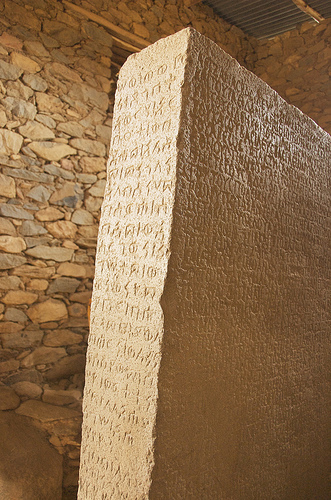 Ethiopian King Converts to Christianity and Unites Many Empires Into One
Ethiopian King Converts to Christianity and Unites Many Empires Into One
It was King Ezana, or Aizanes (320s – c.360AD), also known under the name of Abreha which means Light-maker, who was the first monarch of Axum to embrace Christianity. A coin dated to 324 shows that Ethiopia was the second country to officially adopt Christianity (after Armenia), although the religion may have been at first confined to court circles.
King Ezana of Axum was ruler of the Axumite Kingdom located in present-day Ethiopia, Eritrea and his father was King Ousanas (c.320). Ousana was the king called in Ethiopian tradition “Ella Allada” or Ella Amida. “Ella Amida” would then be his throne name, although “Ousanas” is the name that appears on his coins. Just like his son is called King Ezana on coins and stone inscriptions, but his Christian name listed in Ethiopian annals is “Abreha.” The two great names of Abreha and Atzbeha are praised by the Ethiopic poet (Enc. 4, Ludolf, 1. c. ii. c. 4) for their brotherly love. By the time King Ousana’ son Ezana had become king, the Axumite empire would have been flourishing for several centuries since perhaps as long as the time when Solomon’s son Melekh had arrived and founded this city.
King Ezana had launched several military campaigns against the Nubians and recorded his victories on stone written in Ge’ez (the ancient Eritrean/Ethiopian language), Sabaean (South Arabian) and Greek, praising God for his victories. This stone with the kings recorded inscriptions is now known as the Ezana Stone. The stone monument documents the conversion of King Ezana to Christianity and his subjugation of various neighboring peoples, including Meroë. The stone also lists the fact that the King had set up stone statues and returns thanks ‘ to Ares, who is my father,’ for the victories vouchsafed to him over the adjoining tribes.
The inscription records a victory of Ezana over the people of Adan, and after describing the onslaught, the number of slain 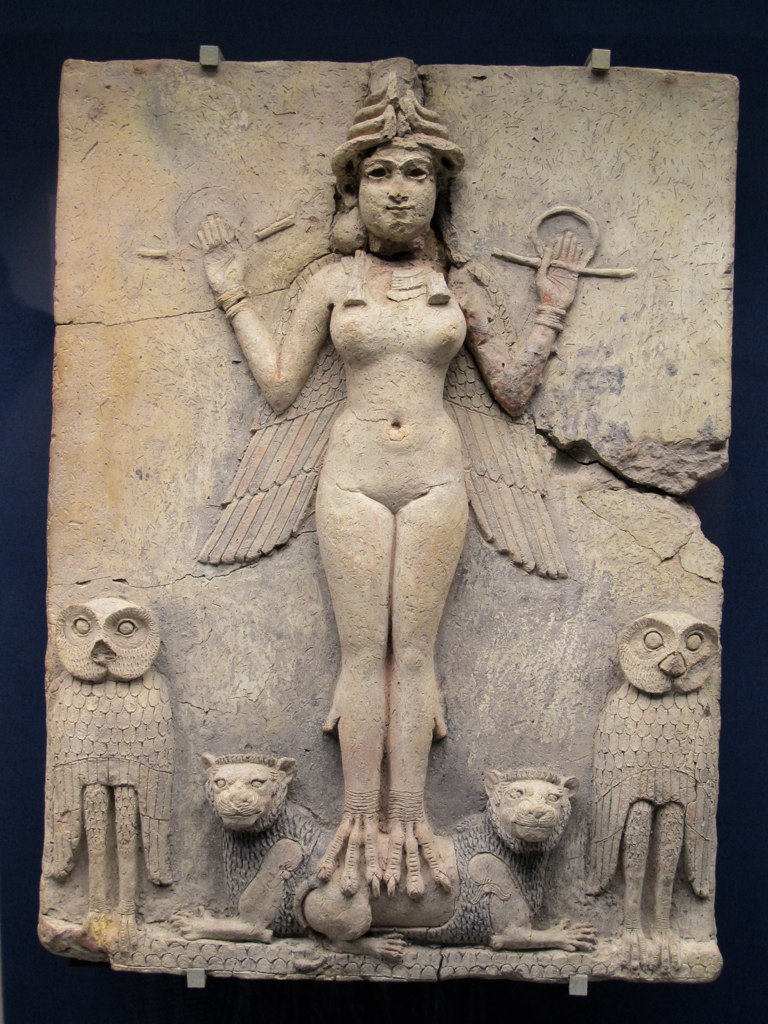 and the prisoners, it proceeds 1. 22, ff.: “And he turned back unharmed with the people of Adan and erected a throne here in Sada and committed him to the protection of Astar (Ishtar or Estarte), Barras and Medr.” King Ezana styles himself ‘ King of the Aksumites, and Homerites, and of Eaeidan, and of the Ethiopians, and of the Sabaeans, and of Zeila.
and the prisoners, it proceeds 1. 22, ff.: “And he turned back unharmed with the people of Adan and erected a throne here in Sada and committed him to the protection of Astar (Ishtar or Estarte), Barras and Medr.” King Ezana styles himself ‘ King of the Aksumites, and Homerites, and of Eaeidan, and of the Ethiopians, and of the Sabaeans, and of Zeila.
It is obvious that he had either subjugated all of these once warring kingdoms or he had united them under one kingdom, making him a very important “Christian King.” The inscription then closes with an imprecation against the king’s enemies somewhat in the strain of those at the end of the annals of the Assyrian kings.
Two Syro-Phoenician Greek Slaves Are Freed and the Ethiopian King Ezana Becomes Christian
King Ezana was an Ethiopian who had practiced the religion of Judaism and also in his court two young Christian Nicene men who were both of Syro-Phoenician Greek decent named Edesius (Aedesius or Sidracus) and Frumentius (Fremonatos) from Tyre (a region of modern Lebanon). According to the 4th century historian Rufinus (x.9), who cites Frumentius’ brother Edesius as his authority, as children (ca. 316) Frumentius and Edesius accompanied their uncle Metropius on a voyage to Ethiopia. When their ship stopped at one of the harbors of the Red Sea, people of the neighborhood massacred the whole crew, with the exception of the two boys, who were taken as slaves to the King of Axum.
The two slave boys had gained favor with the king who then later raised them both to prominent positions of trust in the king’s court. King Ezana who was very ill and close to death had said, “For all you have done, I reward you with your liberty,” and he would free the two slaves. He made Aedesius his cupbearer and Frumentius the keeper of his rolls (scrinia) and his finances or business affairs (rationes suas). It is said that Frumentius lived with a Jewish priest named Anbaram who had also sympathized with the Christians. Before his death the king would appoint the Christian Frumentius, Bishop of the Ethiopian Church. Bishop Frumentius then converted Abraham to Christianity and then baptized King Ezana and many other Ethiopians as well. His good Christian friend Edesius had become a priest in the church and then later returned to his homeland in Tyre.
The birth of Christian Nicene Ethiopian Church and Battle Between Arian and Nicene Factions
The birth of Nicene Ethiopian Church took place at a time when it is said that under Arian Roman Emperor Constantius II, the Arian heresy was at its peak. This conflict was between Arian and Nicene Christian factions struggling for control of the Church and this had occured at this exact same time that the Ethiopian Church had formed. Syro-Phoenician Greek Edesius, Frumentius, and now the Ethiopians were from the Nicene faction and Rome under control of the German Arian faction. The Roman emperor Constantius had of course favored the Arians (who denied the full divinity of Christ). There is a surviving letter from the Roman Emperor Constantius II that is addressed to ‘Ezana and his brother Se’azana, and requests that Frumentius be sent to Alexandria to be examined for doctrinal errors. Constantius wrote to the prince of Ethiopia to ask him to replace Frumentius by Theophilus, a bishop in communion with George, the Arian patriarch of Alexandria.
This letter, which is preserved in ” Apology of Athanasius, addressed to the emperor Constantius” (Athanasius, Historic Tracts, mth notes by I. H. N. pp. 182, 183; Athan. Opp. ed. Ben. I. i. p. 153), assured the princes, “Aezanes and Sazanes” (either the Grecized form of Abreha and Atzbeha or else the Christian names adopted by the sons of the late king) that Athanasius was ” guilty of ten thousand crimes,” that the canonical appointment of Frumentius was very doubtful, that he must be examined on these matters and instructed by the “most venerable George.”
The king refused the orders from Rome because the slave Frumentius who had become Bishop was beloved by the king of Ethiopia and many Ethiopians as well. They were now essentially brothers and considered family to the Ethiopians who now held a lot of Christian power in this region. This power had most likely made the Arians in Rome feel very uneasy about what was happening in this kingdom, that they felt compelled to try to control them, which then proved to be an impossible task over the long run. King Ezana’s choice to ignore these requests from the Arian Roman Emperor must have caused some serious strife between the empires with Rome now not trusting the newly Christianized Nicene Ethiopians. In fact, these differences that the Arians in Rome had may have caused them to become hell-bent on revenge against the Ethiopians for their refusal to obey their orders directly from Rome. This fact will become much clearer in later articles on this subject.
After the death of Frumentius, he received the title of Abbuna, or Abba Salama, “Our Father” and “Father of Peace,” and by that name he is mainly known in the Ethiopic annals. The impact he had made here is proven by inscriptions on coins minted during the second half of King Ezana’s reign. The Coptic Orthodox Church celebrates the feast of Frumentius on December 18, the Eastern Orthodox on November 30, and the Roman Catholic on October 27. Saint Frumentius was venerated on August 1 in the Ethiopian Orthodox Tewahedo Church. Ethiopian tradition also credits him with the first Ge’ez translation of the New Testament.
The Bishops and church of the See of Askum had derived their orders and consecration as their prototype Frumentins had done, from the patriarch of Alexandria. In Ethiopia, as in other parts of Christendom, even though the East and West were united under the banner of Christianity, their differences over scripture interpretation and biblical teachings proved to be not so easy to overcome and eventually would lead to them becoming divided almost right from the very start of this said union.
Council of Chalcedon is held in 451 AD resulting in a major schism and ultimately the separation of the Eastern from the Western Roman Empire
If so, it must have been coincident with another event of immense importance in the history of Oriental Christianity, the schism in the church of Egypt, which followed upon the Council of Chalcedon. The Council of Chalcedon was a church council held from October 8 to November 1, AD 451, at Chalcedon (a city of Bithynia in Asia Minor), on the Asian side of the Bosporus, known in modern times as Istanbul. The council marked a significant turning point in the Christological debates that led to the separation of the Eastern of the Western Roman Empire in the 5th century.
The schism between the Oriental Orthodox and the rest of Christendom resulted in part from the refusal of Pope Dioscorus, Patriarch of Alexandria and the other 13 Egyptian Bishops, to accept the Christological dogmas promulgated by the Council of Chalcedon, which held that Jesus is in two natures: one divine and one human. They would accept only “of or from two natures” but not “in two natures.” The Council’s findings were rejected by many of the Christians on the fringes of the Byzantine Empire, including Egyptians, Syrians, Armenians, the Church of Alexandria, today known as the Coptic Orthodox Church of Alexandria and others had rejected Chalcedon in favor of Ephesus that broke off from the rest of the Church in a schism.
From that point onward, Alexandria would have two patriarchs: the non-Chalcedonian native Egyptian one, now known as the Coptic Pope of Alexandria and Patriarch of All Africa on the Holy Apostolic See of St. Mark and the “Melkite” or Imperial Patriarch, now known as the Greek Orthodox Pope of Alexandria and Patriarch of All Africa.
The Roman Arians Arrive in the Ethiopians Nicene Christian
Could this have been a hostile takeover of the Roman Arian Christian clergy over the Nicenes for the previous century?
Alamid, the latter called elsewhere Amiamid, son of Salodoba (cf. Ludolf, c. ii. and c. iv.). In the reign of Amiamid or Alamid, we are told that many monks came from Rome and filled the kingdom between 460 and 480AD.
In the first ardours of that conflict these monks arrived. They were probably called *’ Roman,” in the sense in which all Greeks were called Roman at that time from being submitted to the Eastern Roman empire ruling from the throne of Constantinople. Several of these great saints arc enumerated—(1) Aragawi, (2) Pantaleon, (3) Gayima, (4) Alef, (5) Sahara, (6) Aft:. (7) Likanos, (8) Adimata. With the exception of Pantaleon, all these names are Ethiopian, and are the translation of the Greek appellatives of these worthies.
Approximately 160 years later in 525 AD, the Ethiopian and Christian King Kaleb had dispatched a fleet across the Red Sea and then annexes Yemen.
Kaleb (c. 520) is one of the best documented of the kings of Axum. Procopius, John of Ephesus, and other contemporary historians recount Kaleb’s invasion of Yemen around 520, against the Jewish Himyarite king Yusuf Asar Yathar (also known as Dhu Nuwas), who was persecuting the Christians in his kingdom. After much fighting, Kaleb’s soldiers eventually routed Yusuf’s forces and killed the king, allowing Kaleb to appoint Sumuafa’ Ashawa’, a native Christian (named Esimphaios by Procopius), as his viceroy of Himyar.
Kaleb is now known as St. Elesbaan after the 16th century Cardinal Cesare Baronio added him to his edition of the Roman Martyrology.
The light of the Christian Aksumite kingdom would later collapse during the darkness of wars with the Arabs of the Persian Empire in approximately 570 or 575 AD.
From this time on, the rise of Muslim Empire and the religion of Islam can be seen dominating much of this region from the 7th Century forward where before these dates listed in this article, the religion of Islam had no or very little influence over this area of the world. In the beginning of the shift from Christian to Muslim control, it is said that Muhammad was on friendly relations with the Christian Askumite Kingdom and had even sent some of his followers there in 615 AD for their protection. In fact, the first commercial treaty with the Muslims was with the Kingdom of Askum. However, later when a new power, the Umayyad Dynasty had took control of the Muslim Empire in the early Eighth Century, these treaties and once friendly relations between the two empires had quickly dissipated after the Umayyad Dynasty had destroyed the Askumite Naval Fleet.
After The Sacred City of the Ethiopians and Christian Askumite Empire was conquered by the Arabs, coins were no longer minted in gold and the agricultural production of food that had thrived in this region under the Jews and Christians for many centuries had basically come to complete halt, leaving little to no food in the area. Soon thereafter, the religious elites who once thrived in this bustling city were the last to abandon this sacred city for more promising land. These three factors proved to be devastating to other inhabitants of this region, who were then also forced to abandon many of the religious centers and land to search for more hospitable lands to freely practice their religions and in order to find food.
What we see today are the ruins of The Sacred City of the Ethiopians that we can now say was once a “United Religious Empire” where the Kingdom of Judah had become one with the Greek and Roman Christian Empires for the first time in history. Then later because of their differences over scripture interpretation and biblical teachings had caused them to become divided, and immediately after this division we can clearly see the rise of the newer religion of Islam in the East. You will also find that it was in the same town of The Sacred City of the Ethiopians where it is said the founder of the Islamic religion, Muhammad was born. A son of a new of the East formed in direct opposition and competition with the Western Roman Empire.

Moe is the founder of GnosticWarrior.com. He is a father, husband, author, martial arts black belt, and an expert in Gnosticism, the occult, and esotericism.


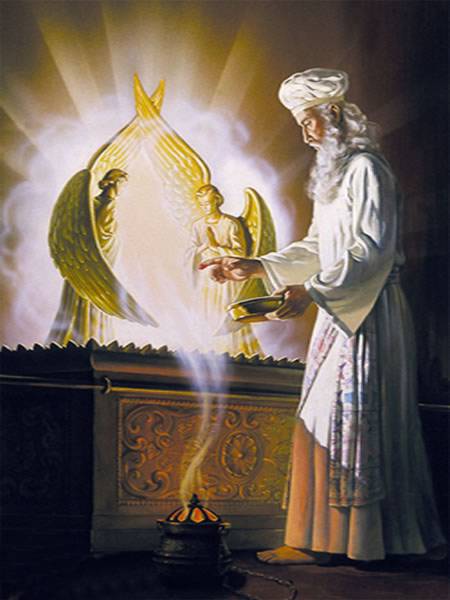
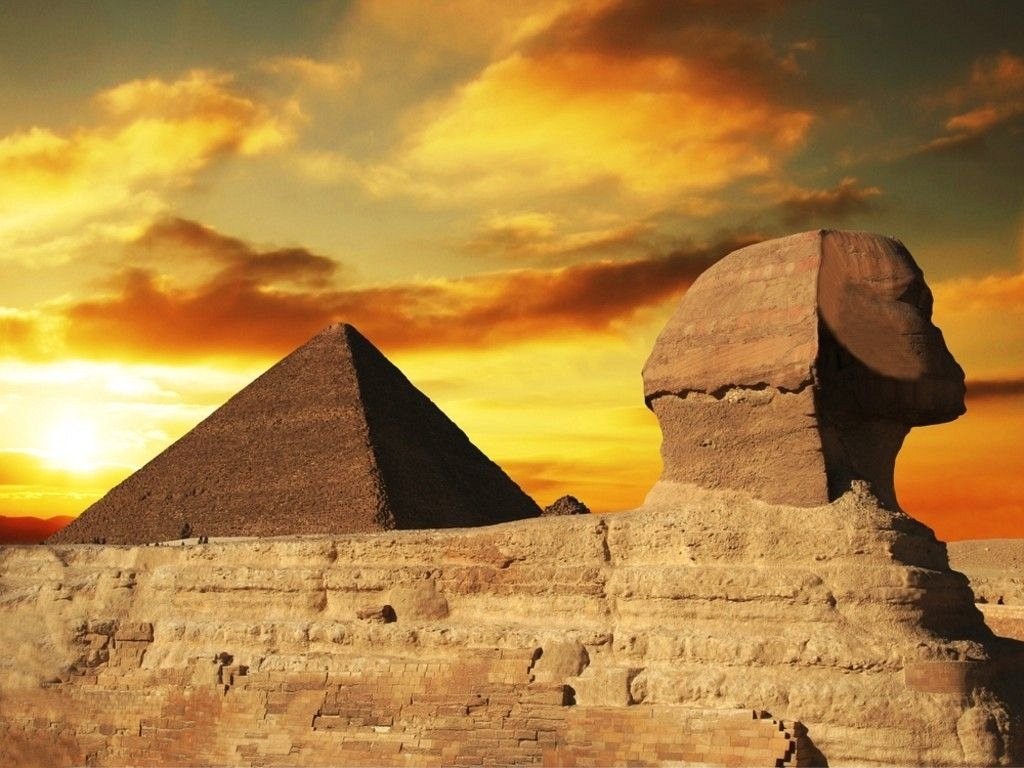

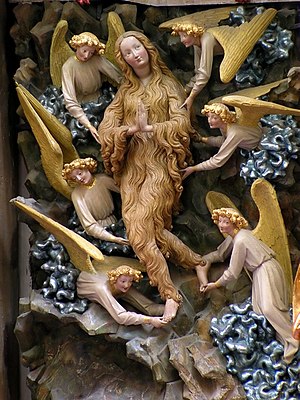



There are a lot of mistakes .and some of them is politically motevated .
For the rest ,I appriciate your effort that the forsaken history to bring back glorious
Thanks for your comment. Please share with me what you think are mistakes so we can discuss them?